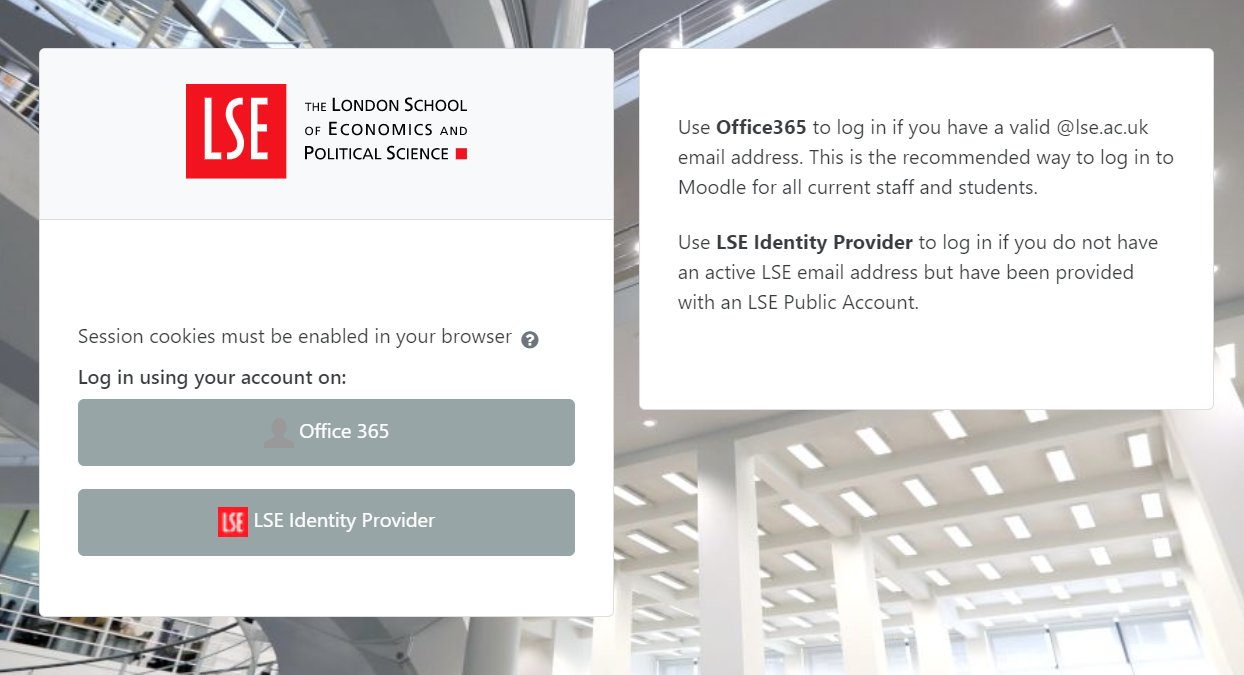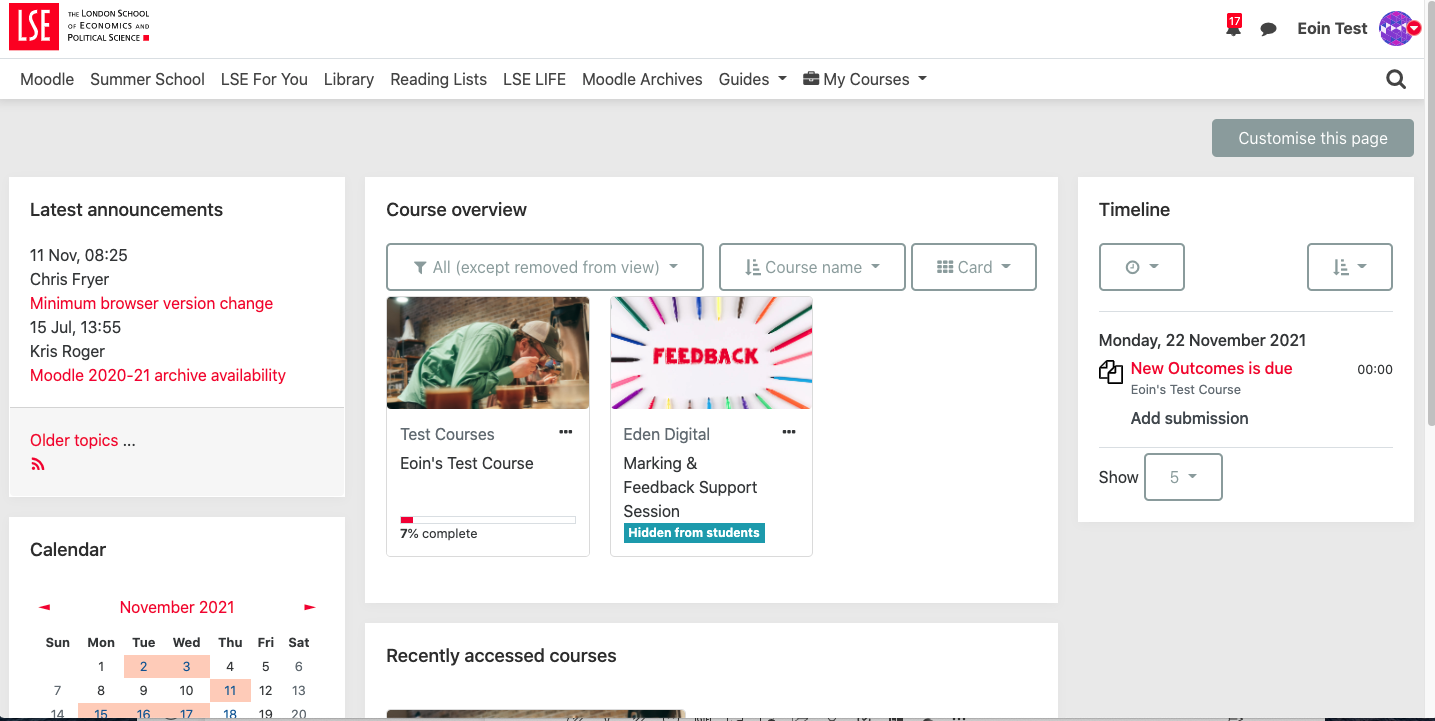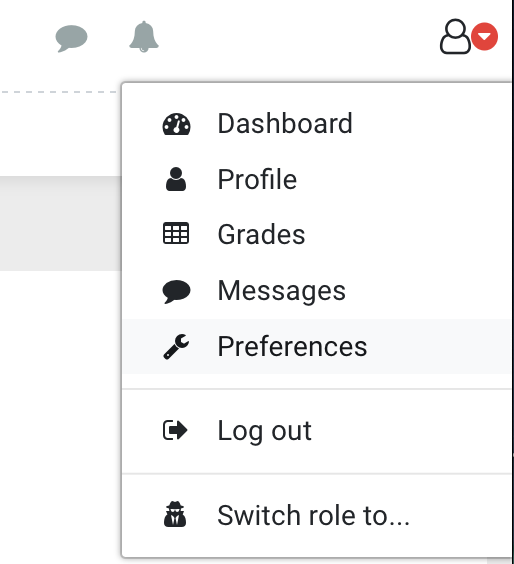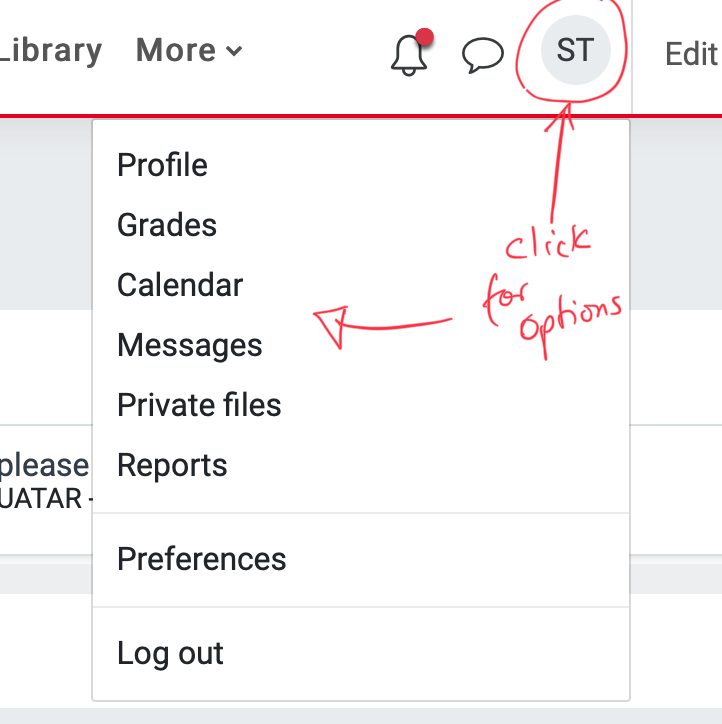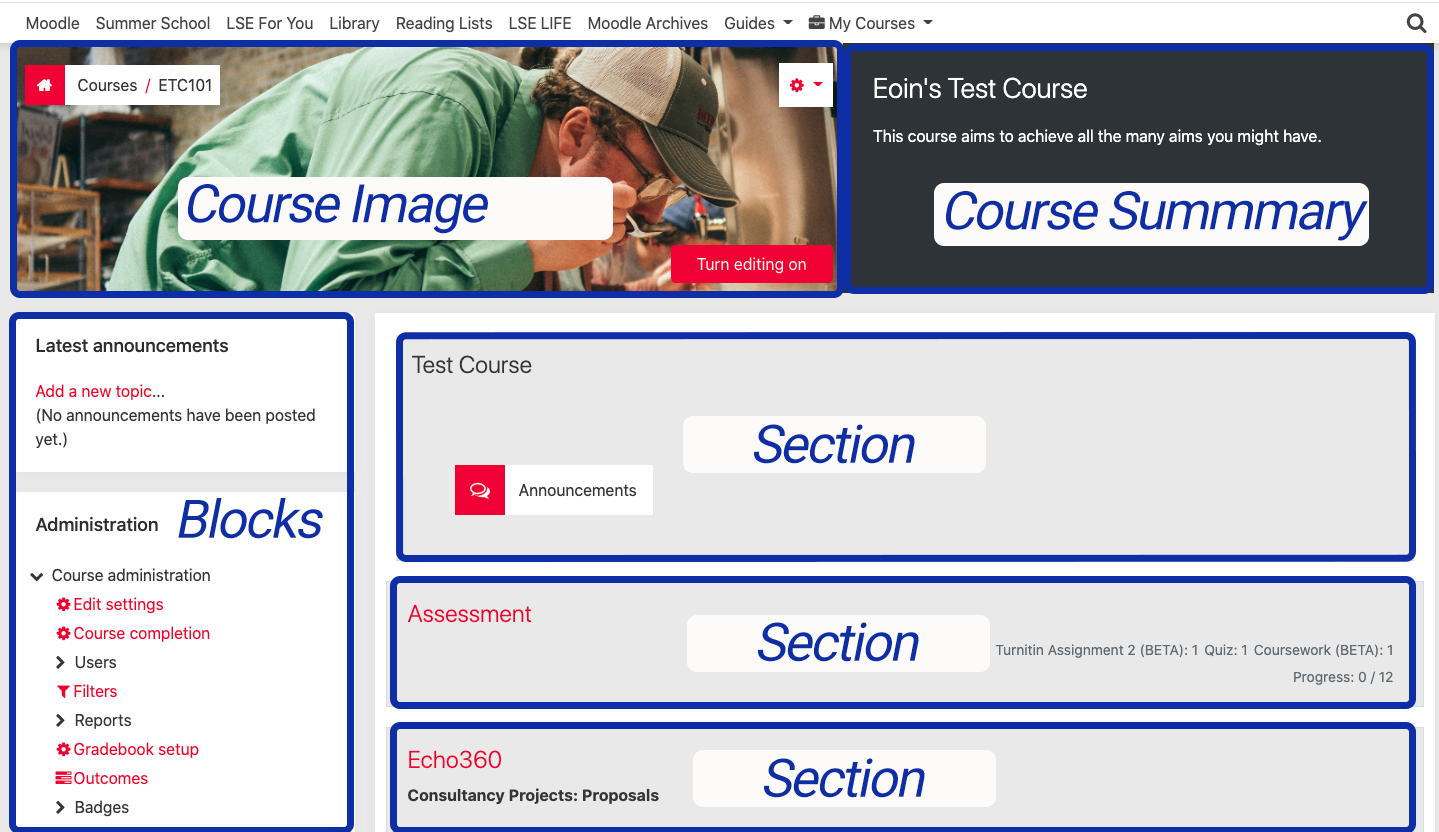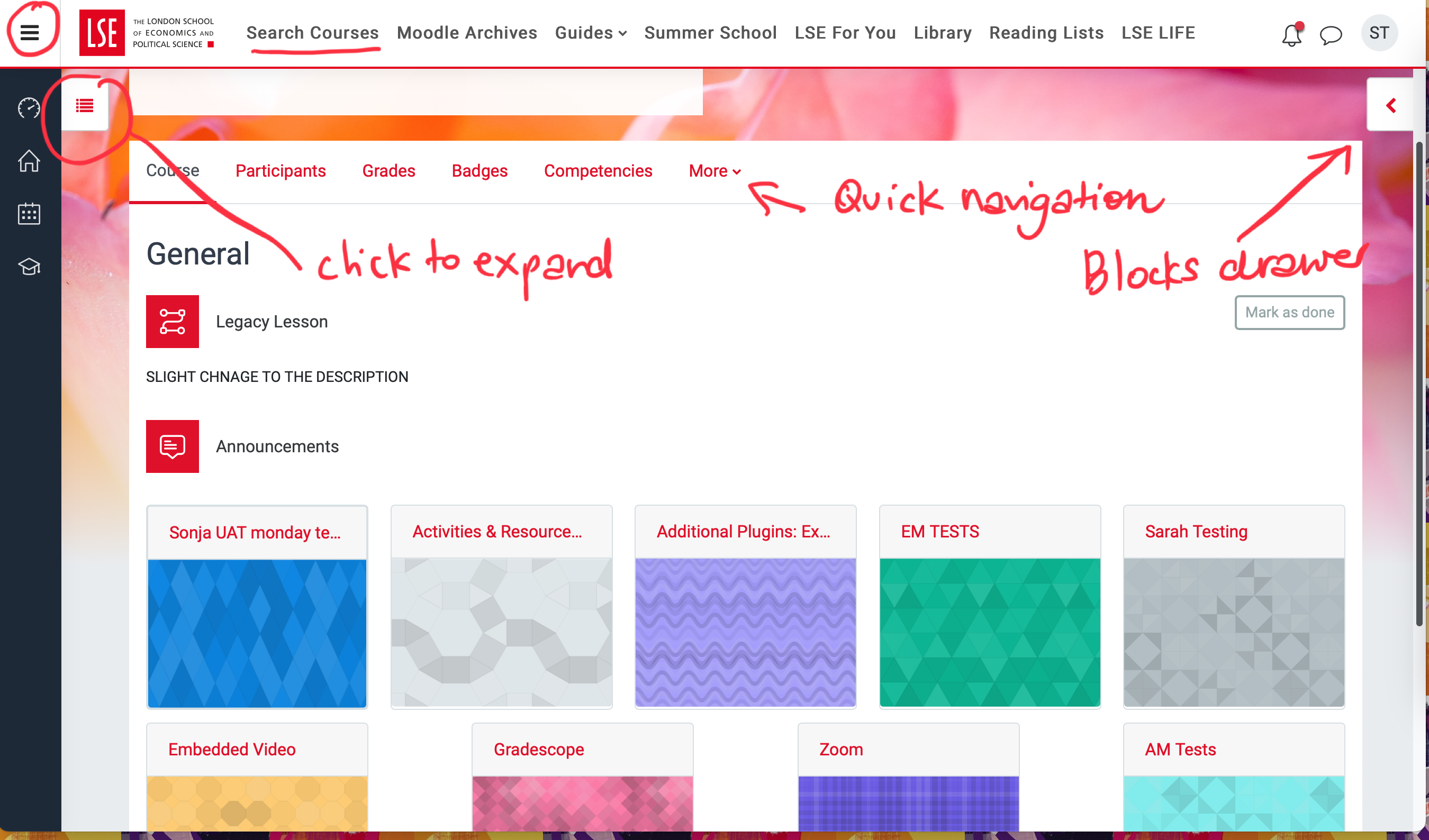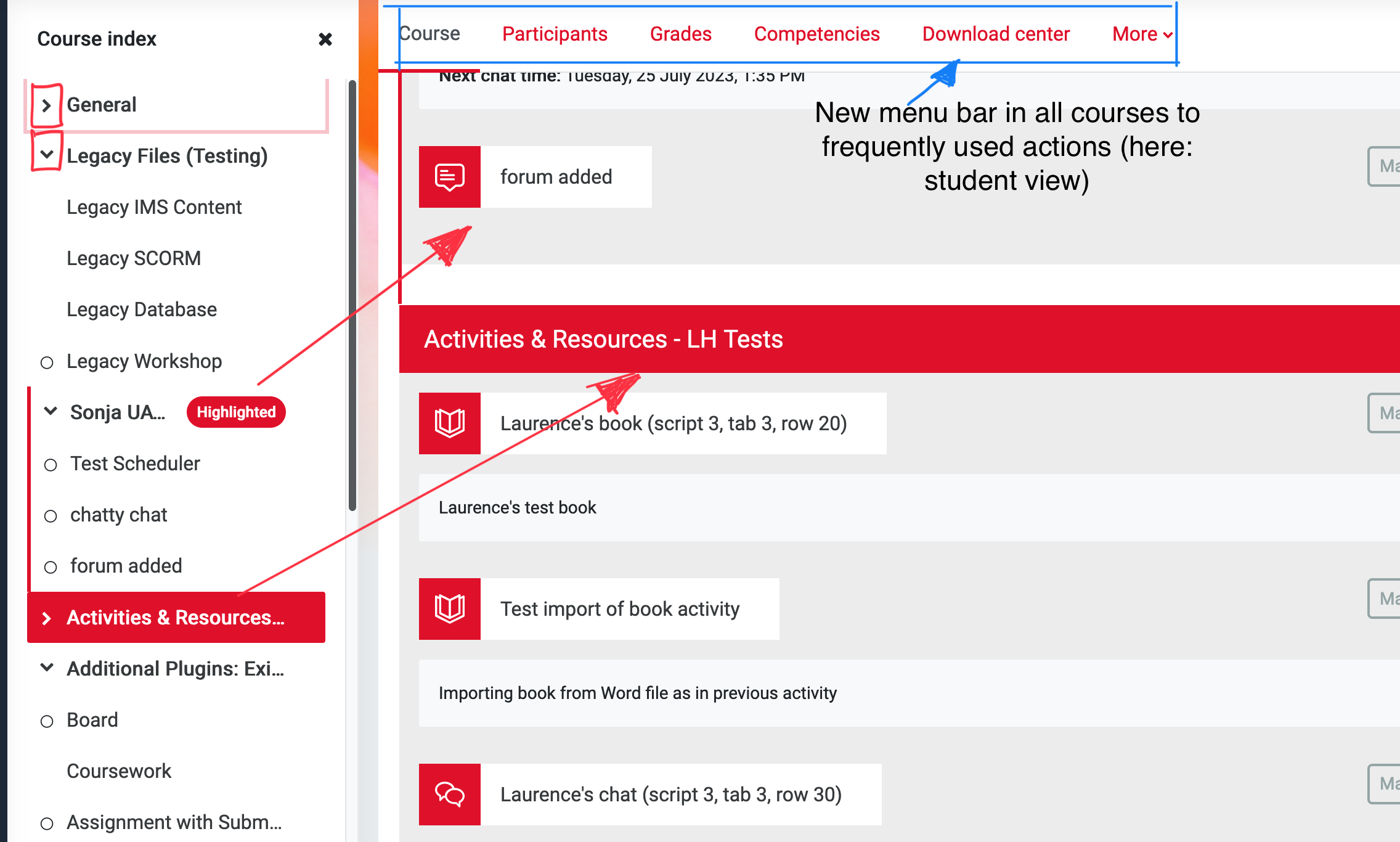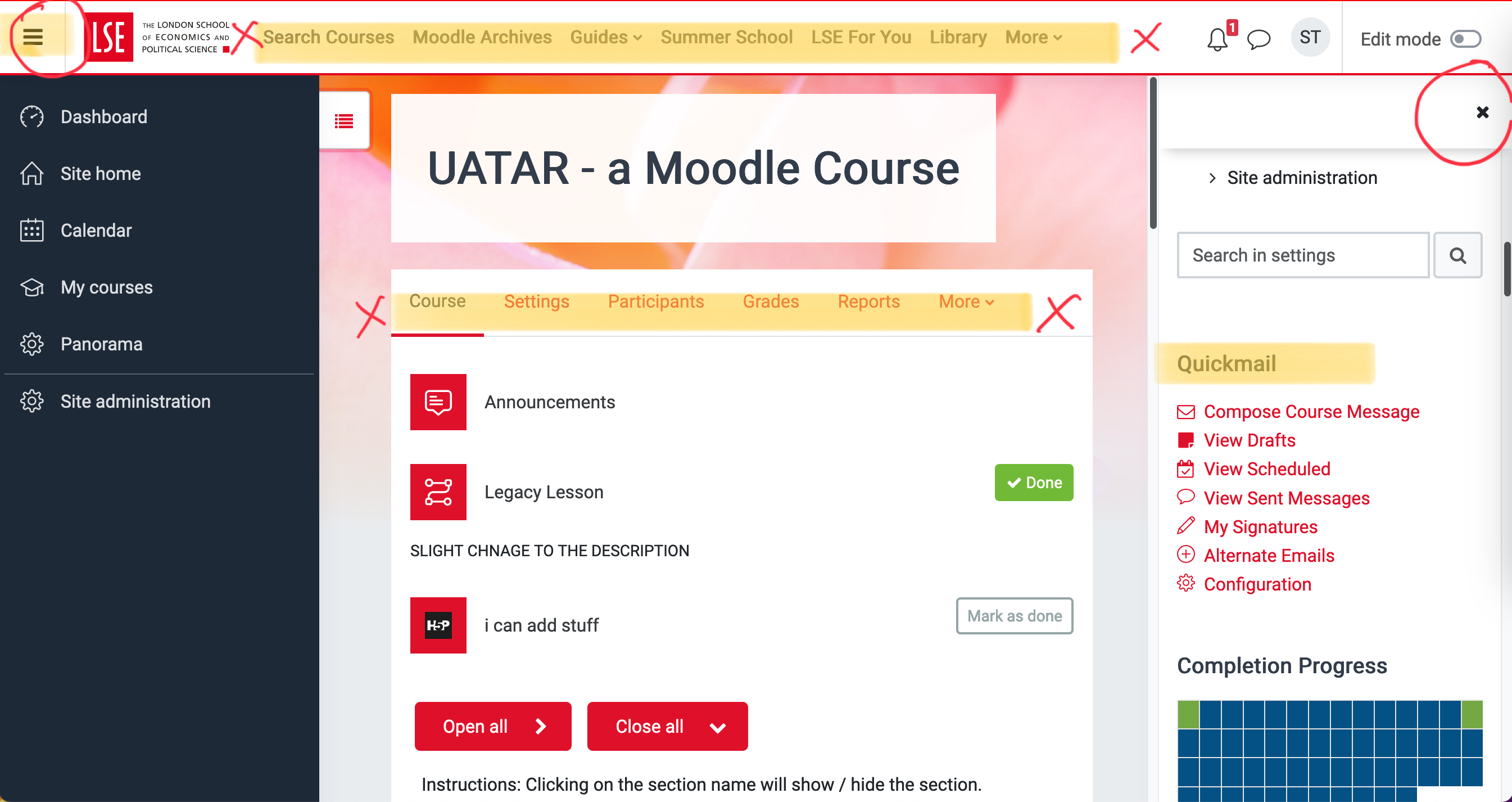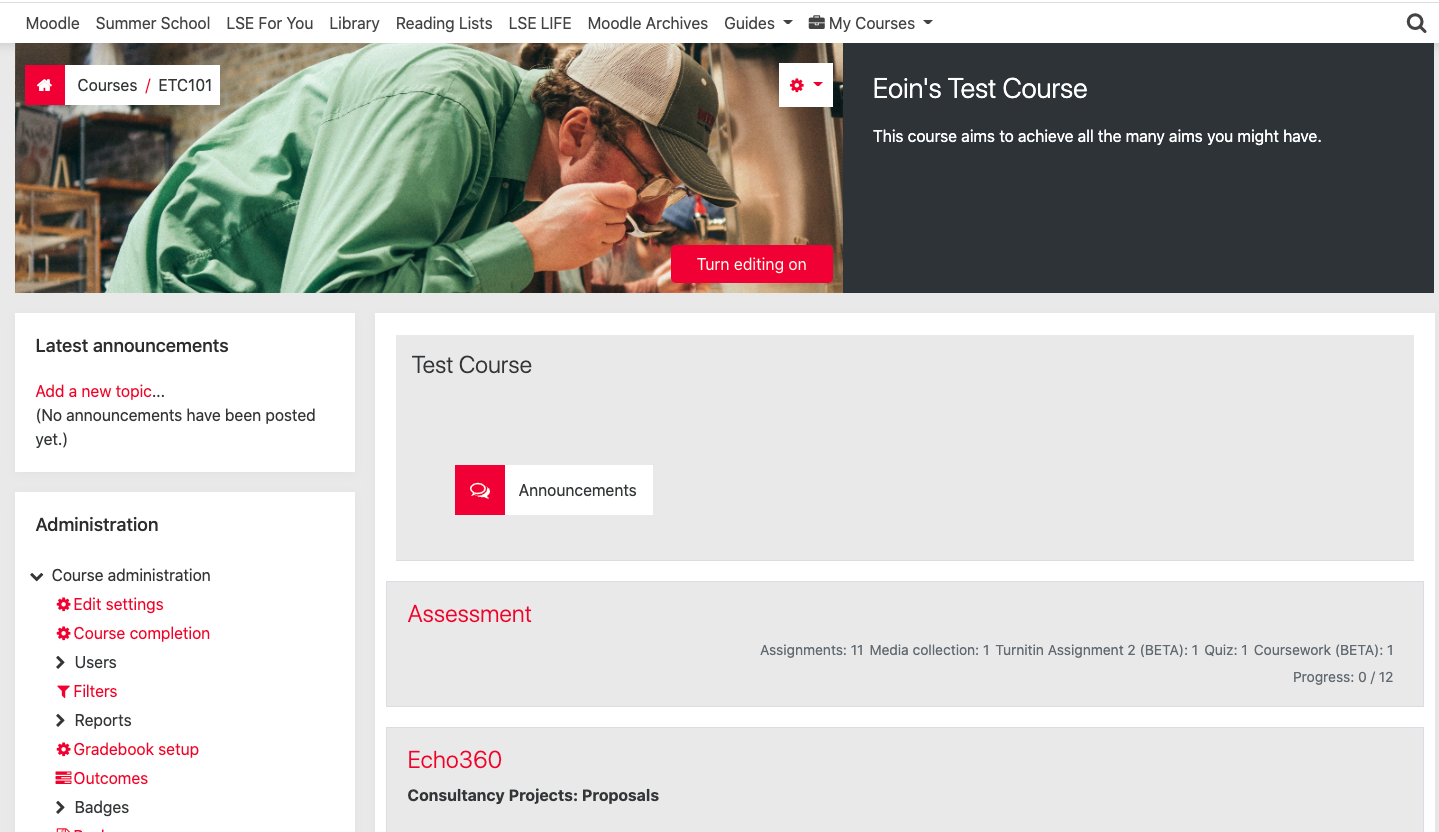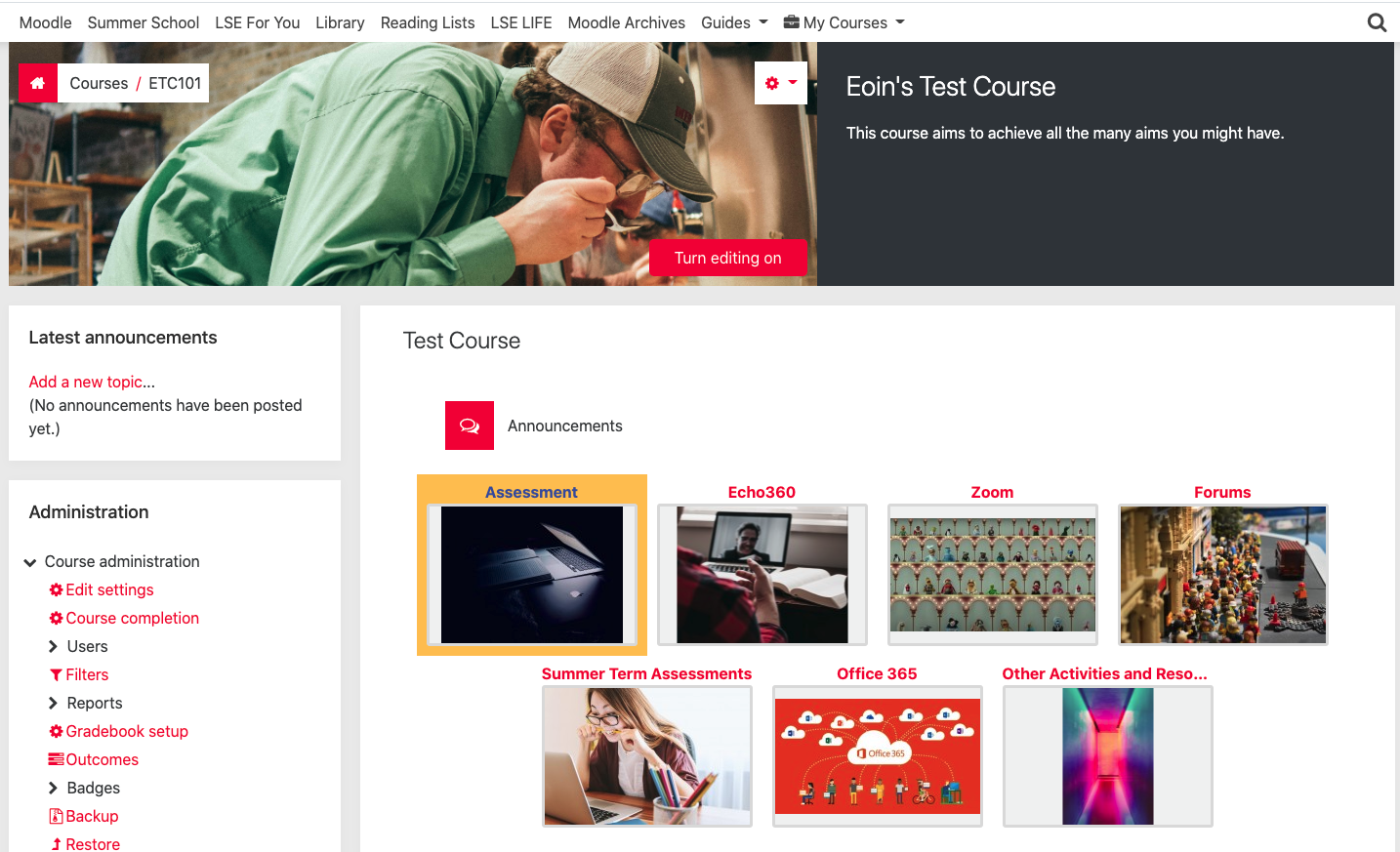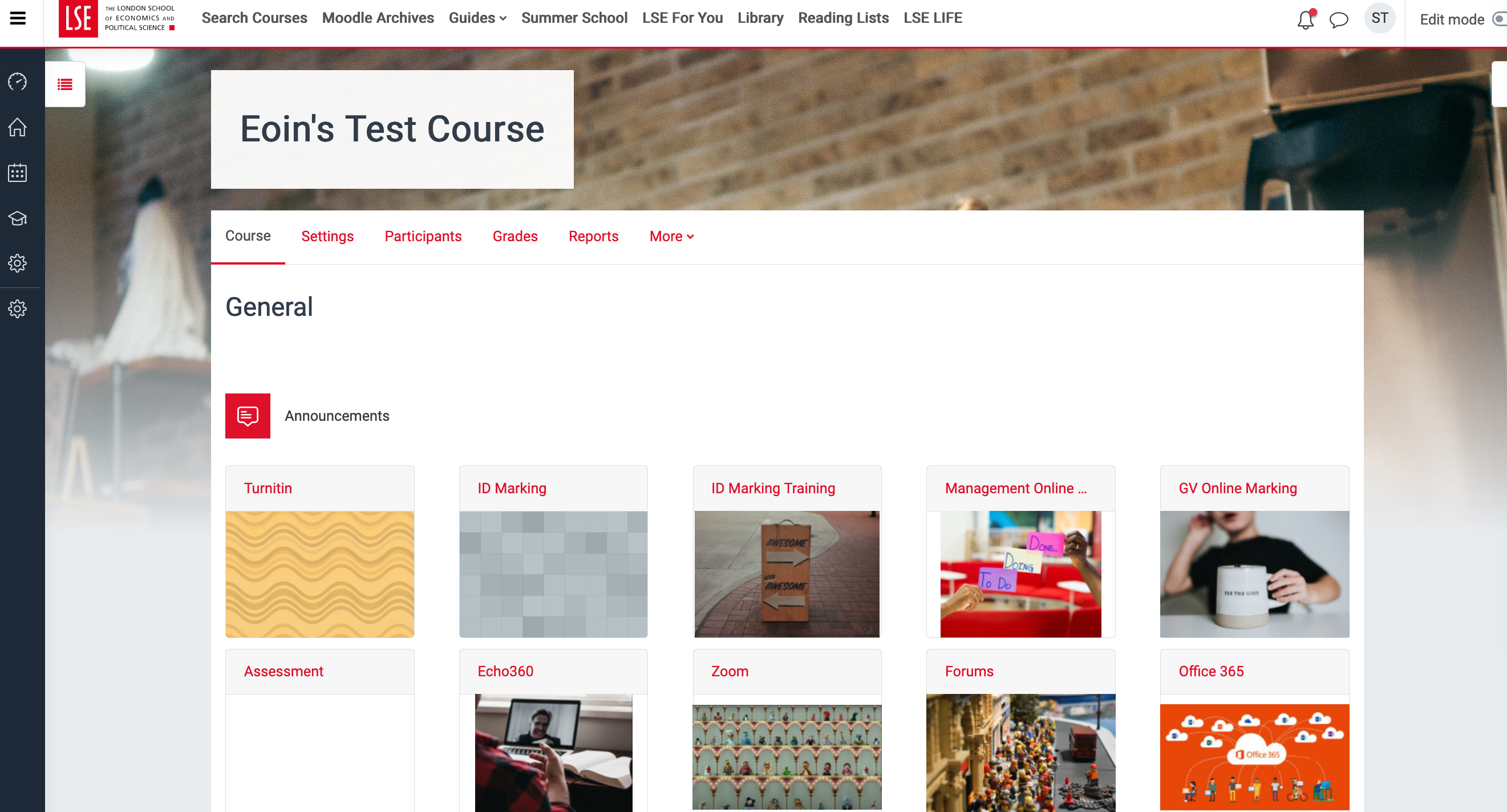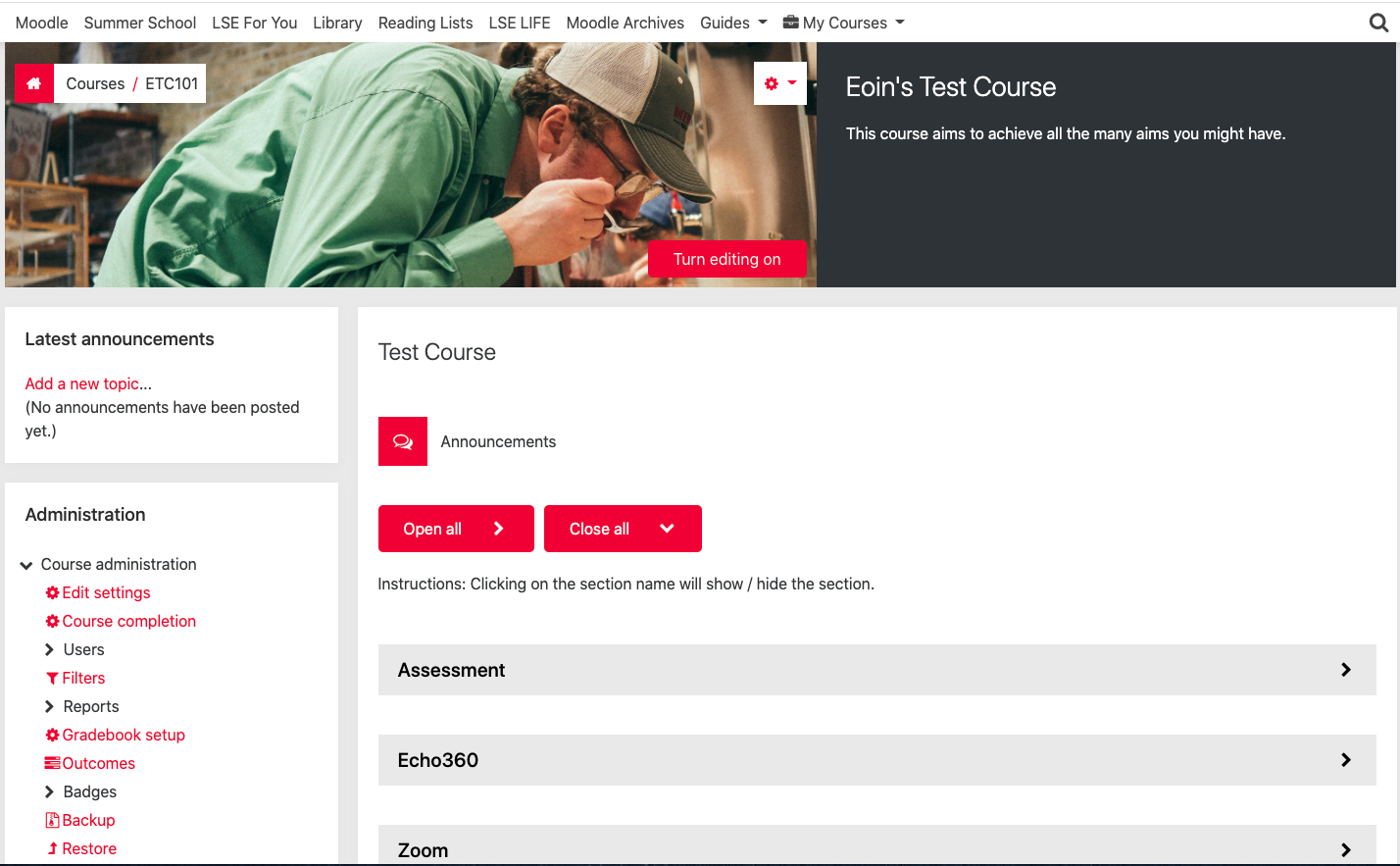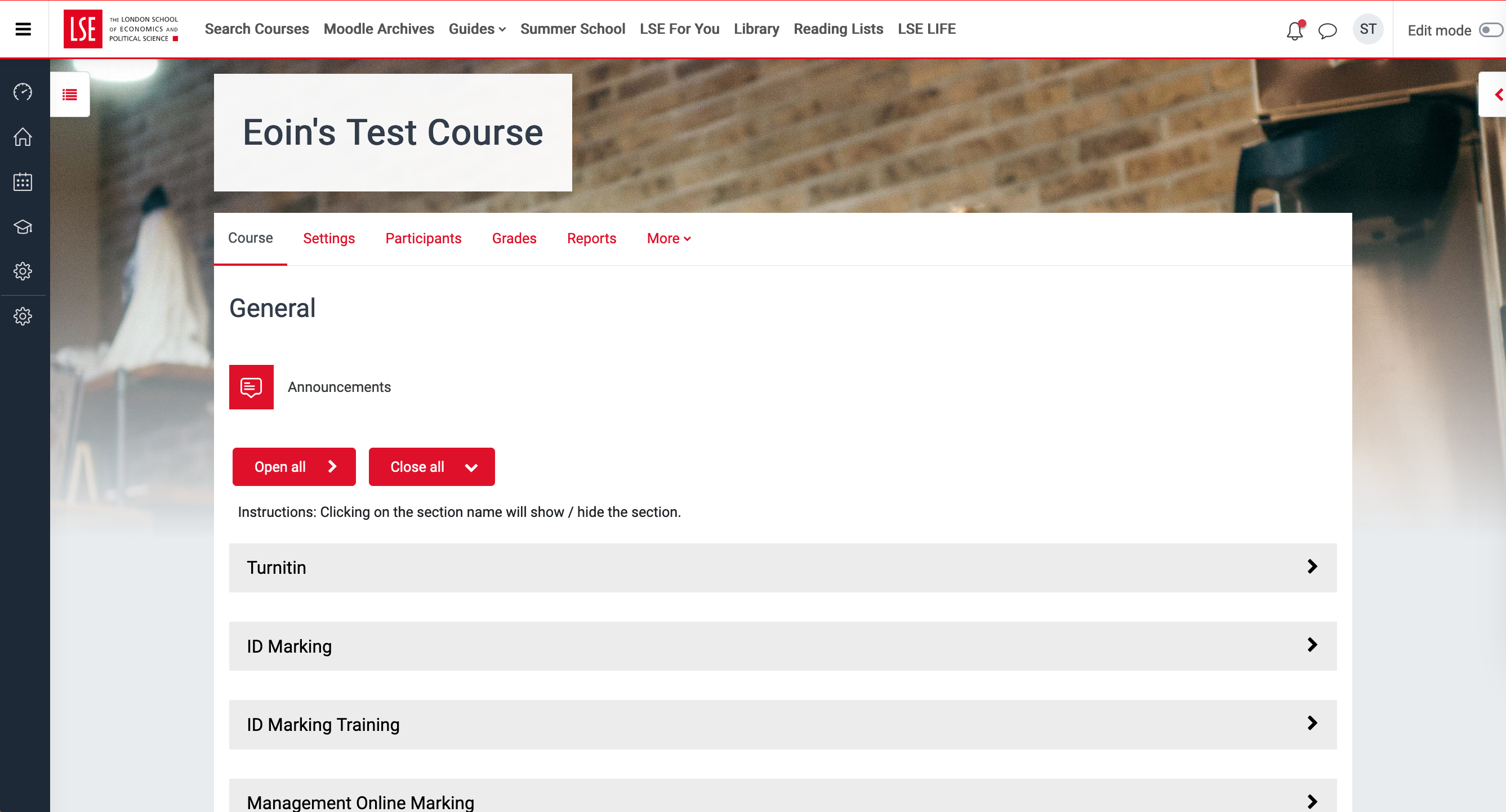| Table of Contents |
|---|
Moodle: LSE VLE
Moodle is an the open source Virtual Learning Environment (VLE), or ‘learning platform’ ‘learning platform’ used at the LSE. It provides an online presence for courses and programmes.
LSE Moodle is available to all teaching staff and students and is used for a variety of academic purposes. Timetabled LSE Undergraduate and Postgraduate courses are automatically created on Moodle.
See also our Moodle Baseline for requirements on how to structure a Moodle course.
Step 1: Go to LSE Moodle
...
| Expand | ||
|---|---|---|
| ||
Forgotten password
In case you have forgotten your credentials:
If you have an LSE account, reset your password following the ‘forgot password’ instructions on the Data and Technologies Services website
If you have a public account (non LSE account) click Forgot username of password and follow the steps.
Step 3: Finding your way around
...
After logging in, you will be taken to your Dashboard.
Your Dashboard contains a Course Overview and a Timeline: We have set a default Dashboard, which you can customise to suit your needs. We recommend you keep the timeline and course overview.
Course Overview – here you should be able to see any are all courses that you are enrolled in. You can use the filter at the top of the Course Overview to determine which courses show here. You can also chose how to sort your courses and which format to view them (Card, List or Summary).
...
| Expand | ||
|---|---|---|
| ||
Blocks
On the left hand side you will see various blocks:
Navigation - this block appears in every course and lists the courses your are enrolled into and also links you to your Dashboard and the Moodle Site home page.
Calendar - this block displays any deadlines or events from courses that you are enrolled on.
...
Customise your Dashboard
You can customise your dashboard by clicking on the Customise this page button in the top right of the page.
To move the Put your page into Edit mode (top right button). Then either drag exisiting blocks or add other blocks to your page
To move any blocks, click on and hold the cross icon in the top right of a block.
...
Use Add a block to select and add other blocks to your dashboard.
Left Side Menu
On the left hand side there is a general menu, which you can expand via the ‘hambuerger icon’, the three stacked small lines at the top.
...
Profile
In the top right hand corner you will see your name and an icon with an arrow. Click on the arrow to access your Profile, Preferences, Dashboard, Grades and Messages.
| Expand | ||
|---|---|---|
| ||
Menu
The top navigation menu, includes links to other services (LSE Life, Library, Moodle Archive) .It also contains a drop down list of the courses you are enrolled on and a search feature where you can search courses by course name or course codeand the COURSE SEARCH.
| Expand | ||
|---|---|---|
|
...
Course page
Once you have selected a course, you will be taken to the course main page. The layout consists of two-columns. On the left, you will find blocks, and, on the right, the main course content divided into sectionsfocuses on the main sections, i.e. the actual course content. Depending on your teachers' or departments' choice(s) it will either be in collapsisble topics or in a grid format. The below screenshot shows the grid format. LSE has moved to Moodle Version 4.1 (as of 11th August 2023), and there have been considerable improvements to navigation.
You can find information blocks in the BLOCKS drawer on the right, if you expand it by clicking the < arrow. At the top of each course page are shortcuts to often needed areas, like other students or your grades. There is now also a course index, which presents a linear textual navigation INDEX for you to quickly find resources and activities.
| Expand | ||||
|---|---|---|---|---|
| ||||
Blocks DrawerOn the very right, we have the new BLOCKS area. These are in a drawer, which can be closed and opened to make the main middle content space bigger. The next screenshot shows what the course page looks like when left and right handed menus have been collapsed. |
Sections
Sections represent weeks or topics, depending on the selected course format. In each section, you can add content, activities and resources.
Blocks
Blocks display additional information and features for courses.
...
.
...
Hidden content
Some resources on the page are coloured grey, which means that they are hidden from students. Only teachers and editors can see such items. Entire sections can be hidden if required.
Course formats
The most two commonly-used formats in LSE Moodle are:
...
The course is organised into sections with a custom topic title.
| Expand |
|---|
Grid
It creates a grid of sections displayed as an image or an icon.
| Expand | ||
|---|---|---|
| ||
Collapsed topics
Similar to the Topics format, but all sections can be toggled on and off.
| Expand |
|---|
Navigating within a course
In the column of blocks, you will find the Navigation block. This will provide easy access to the different sections, pages, features, activities and resources of your course.
Additionally, when navigating your course you will find a ‘breadcrumb trail’ at the top of the page. This will show a path of links up to the page you are currently viewing.
| Expand | ||||
|---|---|---|---|---|
|
| |||
| Filter by label (Content by label) | ||
|---|---|---|
|


